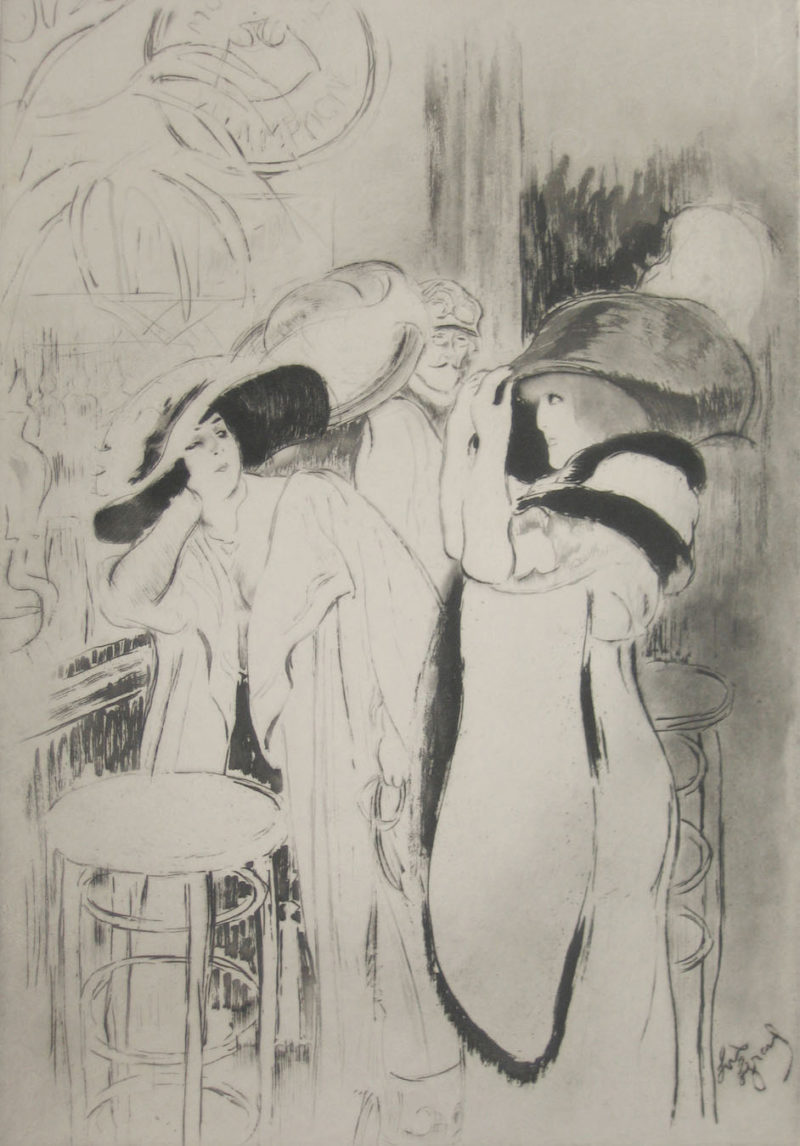Legrand, Louis
1863 – 1951
French
As a young man, Legrand pursued a career in banking, but by the age of 20 realized that he was not cut out for such a life and began to study art at the École des Beaux Arts in his native Dijon. After receiving the coveted Prix Desvoge, he left for Paris to continue his education. Soon after his arrival in the French capital, he met Felicien Rops whose work he admired and with whom he studied engraving techniques.
In the early years of his career, Legrand supported himself with work as an illustrator for books and journals, sometimes in collaboration with more established artists such as Steinlen, Willette and Forain.
Legrand eventually found his muse in the demi-monde of prostitutes, can-can girls and painted ladies of the theatre. He became a habitué of the bars and music halls of Montmartre. Of these subjects he created some of his best work, some images so radical that he was briefly imprisoned for refusing to edit them to be more palatable to the general public.
Ironically, Legrand’s other major theme was of religious subjects, mysticism and the supernatural. At the same time he was drawing the ladies of the evening, he was working on a Book of Hours comprising medieval texts and prayers.
In 1898 Legrand had the good fortune to meet Gustave Pellet, an educated and cultured man, well connected in Parisian society. Pellet was beginning his own fine art publishing house and quickly signed on Legrand. Pellet went on to publish over 300 original prints for his protege.
During the 1890’s Legrand completed several albums of etchings, engravings and aquatints on the theme of ballet dancers. Although comparisons to Degas were inevitable, they were quickly forgotten. Legrand’s ballerinas were charming and gracious, but realistic and not impressionistic in style.
Legrand was finally well accepted both in the art world and in Parisian society. He won the silver medal at the l’Exposition Universelle in 1900, was awarded the Légion d’honneur in 1906, and was given several solo exhibitions in museums and prestigious galleries.
The outbreak of World War I, coupled with the death of his mentor Gustave Pellet, marked the end of Legrand’s career as a print maker. He retreated into his family and produced only the occasional drawing or illustration. He passed the rest of his life in obscurity but left us a trove of insightful views of fin de siècle Paris.

